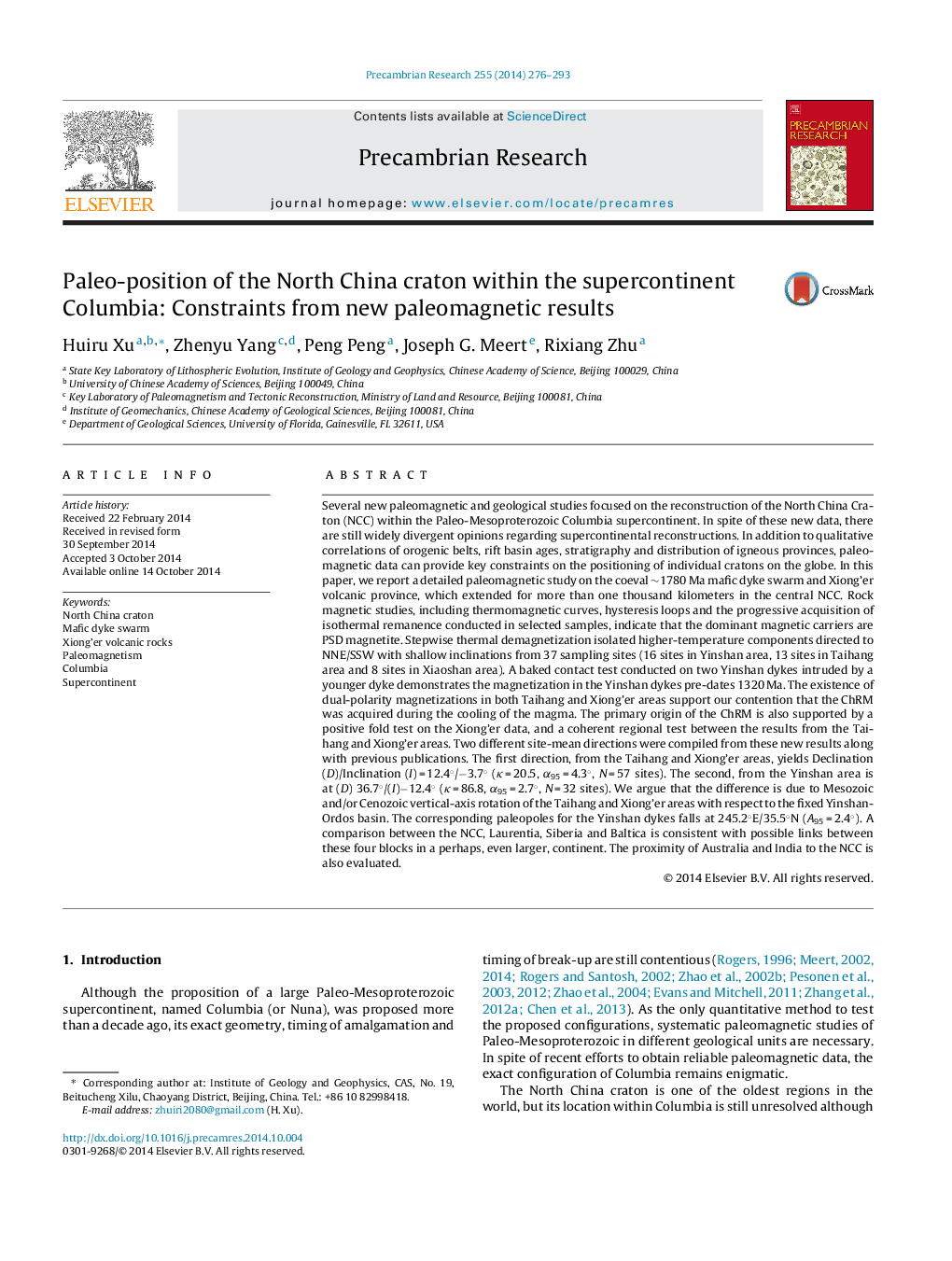| کد مقاله | کد نشریه | سال انتشار | مقاله انگلیسی | نسخه تمام متن |
|---|---|---|---|---|
| 4722789 | 1355488 | 2014 | 18 صفحه PDF | دانلود رایگان |
• A new high-quality 1.78 Ga paleo-pole of the North China Craton was reported.
• The North China Craton could be a part of the Columbia supercontinent until ∼1400 Ma.
• The North China Craton could connect with NW Australia and possibly India.
Several new paleomagnetic and geological studies focused on the reconstruction of the North China Craton (NCC) within the Paleo-Mesoproterozoic Columbia supercontinent. In spite of these new data, there are still widely divergent opinions regarding supercontinental reconstructions. In addition to qualitative correlations of orogenic belts, rift basin ages, stratigraphy and distribution of igneous provinces, paleomagnetic data can provide key constraints on the positioning of individual cratons on the globe. In this paper, we report a detailed paleomagnetic study on the coeval ∼1780 Ma mafic dyke swarm and Xiong’er volcanic province, which extended for more than one thousand kilometers in the central NCC. Rock magnetic studies, including thermomagnetic curves, hysteresis loops and the progressive acquisition of isothermal remanence conducted in selected samples, indicate that the dominant magnetic carriers are PSD magnetite. Stepwise thermal demagnetization isolated higher-temperature components directed to NNE/SSW with shallow inclinations from 37 sampling sites (16 sites in Yinshan area, 13 sites in Taihang area and 8 sites in Xiaoshan area). A baked contact test conducted on two Yinshan dykes intruded by a younger dyke demonstrates the magnetization in the Yinshan dykes pre-dates 1320 Ma. The existence of dual-polarity magnetizations in both Taihang and Xiong’er areas support our contention that the ChRM was acquired during the cooling of the magma. The primary origin of the ChRM is also supported by a positive fold test on the Xiong’er data, and a coherent regional test between the results from the Taihang and Xiong’er areas. Two different site-mean directions were compiled from these new results along with previous publications. The first direction, from the Taihang and Xiong’er areas, yields Declination (D)/Inclination (I) = 12.4°/−3.7° (κ = 20.5, α95 = 4.3°, N = 57 sites). The second, from the Yinshan area is at (D) 36.7°/(I)−12.4° (κ = 86.8, α95 = 2.7°, N = 32 sites). We argue that the difference is due to Mesozoic and/or Cenozoic vertical-axis rotation of the Taihang and Xiong’er areas with respect to the fixed Yinshan-Ordos basin. The corresponding paleopoles for the Yinshan dykes falls at 245.2°E/35.5°N (A95 = 2.4°). A comparison between the NCC, Laurentia, Siberia and Baltica is consistent with possible links between these four blocks in a perhaps, even larger, continent. The proximity of Australia and India to the NCC is also evaluated.
Journal: Precambrian Research - Volume 255, Part 1, December 2014, Pages 276–293
